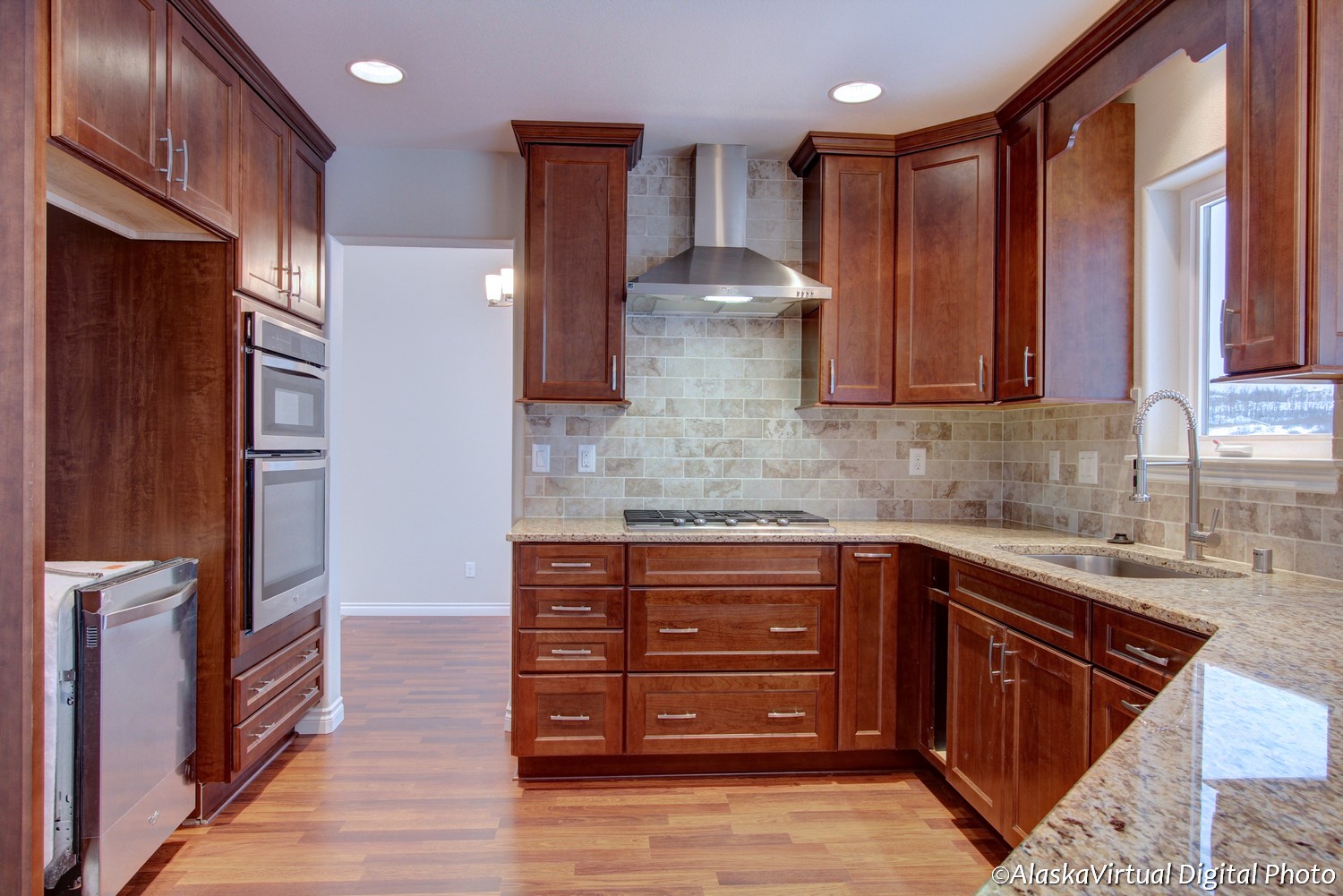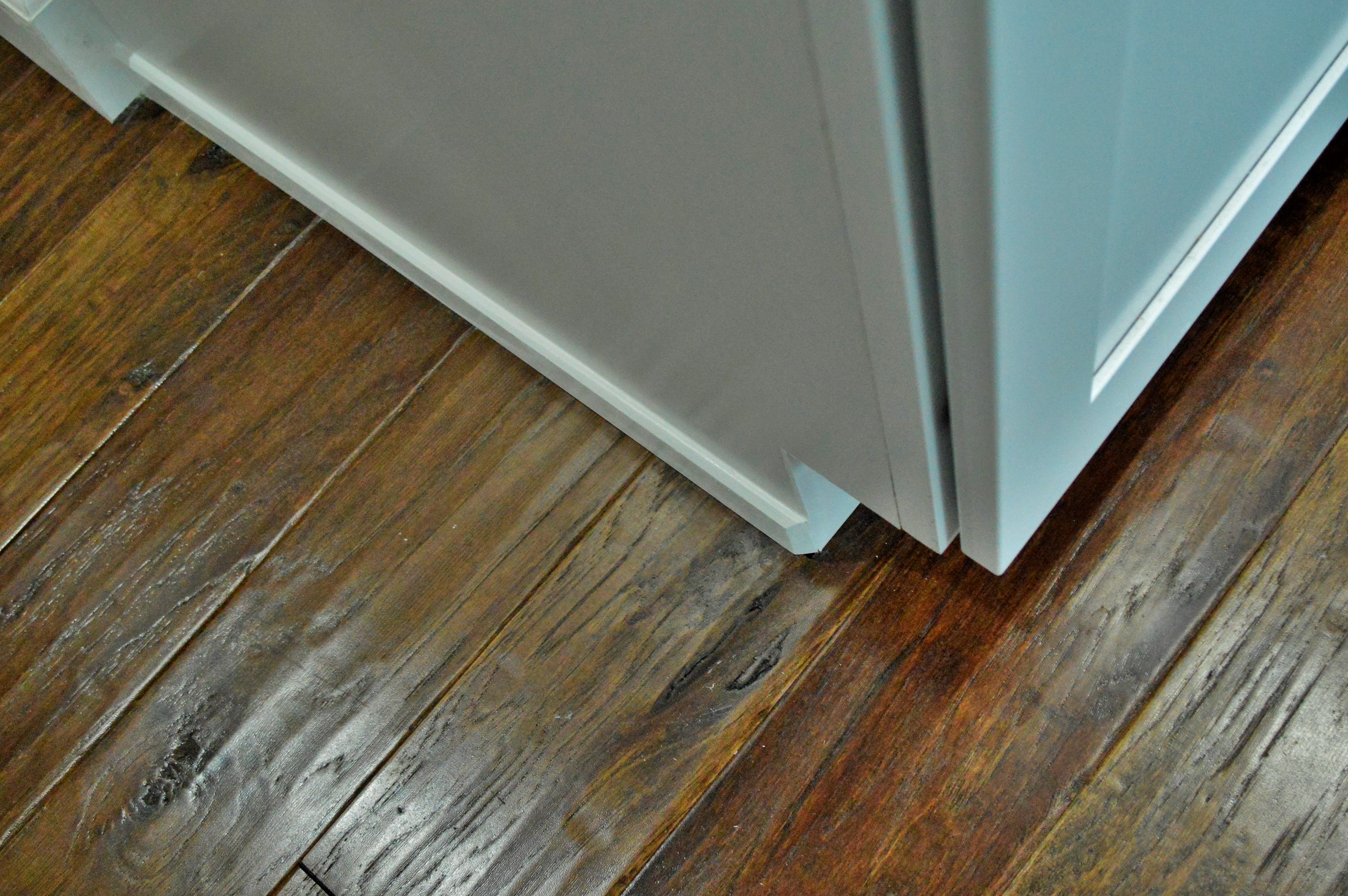Kitchen Cabinet Floor Trim Styles

Kitchen cabinet floor trim is a decorative element that can add a touch of elegance and sophistication to any kitchen. It can also help to protect the bottom of your cabinets from damage and make them easier to clean. There are many different styles of kitchen cabinet floor trim to choose from, each with its own unique look and feel.
Traditional Kitchen Cabinet Floor Trim Styles
Traditional kitchen cabinet floor trim is characterized by its classic and timeless design. It is often made from wood and features intricate details, such as moldings, carvings, and beading.
- Casing: This is a popular choice for traditional kitchens. It is a simple, yet elegant trim that is often used to frame the bottom of the cabinets.
- Baseboard: This is another popular choice for traditional kitchens. It is a more substantial trim that is typically installed along the bottom of the wall and covers the gap between the cabinets and the floor.
- Chair Rail: This is a decorative trim that is often used to create a visual separation between the upper and lower cabinets. It can also be used to protect the wall from scratches and dents.
Modern Kitchen Cabinet Floor Trim Styles
Modern kitchen cabinet floor trim is characterized by its clean lines and minimalist design. It is often made from metal or plastic and features simple details, such as straight edges and geometric shapes.
- Metal Trim: This is a popular choice for modern kitchens. It is durable, easy to clean, and comes in a variety of finishes, such as stainless steel, brushed nickel, and chrome.
- Plastic Trim: This is a budget-friendly option that is available in a variety of colors and styles. It is also easy to install and maintain.
- Minimalist Trim: This is a simple trim that is often used to create a clean and uncluttered look. It is typically made from wood or metal and features straight edges and minimal detailing.
Contemporary Kitchen Cabinet Floor Trim Styles
Contemporary kitchen cabinet floor trim is a blend of traditional and modern styles. It often features clean lines and simple details, but it can also incorporate some traditional elements, such as moldings and carvings.
- Mixed Materials: Contemporary kitchen cabinet floor trim often features a combination of materials, such as wood and metal. This can create a unique and visually interesting look.
- Geometric Shapes: Contemporary kitchen cabinet floor trim often features geometric shapes, such as squares, rectangles, and triangles. This can add a touch of modern sophistication to the kitchen.
- Bold Colors: Contemporary kitchen cabinet floor trim can also be used to add a pop of color to the kitchen. This can be achieved by using bold colors for the trim itself or by using a contrasting color for the trim against the cabinets.
Installing Kitchen Cabinet Floor Trim

Installing kitchen cabinet floor trim is a relatively simple process that can dramatically enhance the look of your kitchen. It creates a clean, finished look by concealing the gap between the cabinets and the floor, while also protecting the bottom of your cabinets from damage.
Tools and Materials
The following tools and materials are essential for installing kitchen cabinet floor trim:
| Tool/Material | Description |
|---|---|
| Measuring Tape | For accurate measurement of trim pieces. |
| Miter Saw | For precise cuts at 45-degree angles. |
| Level | To ensure the trim is installed straight and level. |
| Pencil | For marking cut lines on the trim. |
| Safety Glasses | To protect your eyes from sawdust and debris. |
| Wood Glue | For adhering the trim to the cabinets. |
| Finishing Nails | For securing the trim to the cabinets. |
| Nail Gun (Optional) | For faster and easier nailing. |
| Wood Filler | To fill any gaps or nail holes. |
| Sandpaper | For smoothing the wood filler and achieving a smooth finish. |
| Paint or Stain (Optional) | For finishing the trim to match your cabinets. |
Measuring and Cutting
Before you begin cutting, it’s essential to measure accurately. Here’s a step-by-step guide:
- Measure the length of each section of trim needed, taking into account any corners or obstacles.
- Mark the cut lines on the trim using a pencil.
- Use a miter saw to make precise cuts at 45-degree angles for corners.
- Test-fit the trim pieces to ensure they fit perfectly before attaching them.
Attaching the Trim
Once you have measured and cut the trim pieces, you can begin attaching them to the cabinets:
- Apply a thin bead of wood glue to the back of each trim piece.
- Align the trim piece with the bottom of the cabinet and press firmly into place.
- Use finishing nails to secure the trim to the cabinets.
- For corners, carefully align the mitered edges and secure them with glue and nails.
Finishing, Kitchen cabinet floor trim
After attaching the trim, you can finish it to match your cabinets:
- Use wood filler to fill any gaps or nail holes.
- Sand the wood filler smooth using sandpaper.
- Paint or stain the trim to match your cabinets.
Installing Trim Around Corners
Installing trim around corners requires precise cuts and careful alignment.
- Measure the length of each section of trim needed, taking into account the angle of the corner.
- Use a miter saw to make precise cuts at 45-degree angles.
- Test-fit the trim pieces to ensure they fit perfectly before attaching them.
- Apply wood glue to the back of each trim piece.
- Align the trim pieces with the corner and press firmly into place.
- Use finishing nails to secure the trim to the cabinets.
- Ensure that the mitered edges of the trim pieces meet perfectly at the corner.
Kitchen Cabinet Floor Trim Ideas

Kitchen cabinet floor trim is a versatile design element that can transform the look and feel of your kitchen. By adding trim, you can create a cohesive design, define different areas, and enhance the overall aesthetic appeal. Let’s explore some inspiring ideas for incorporating trim into your kitchen.
Creating a Custom Look
Kitchen cabinet floor trim can be used to create a custom look that reflects your personal style. Here are some ways to achieve this:
- Matching Trim to Cabinetry: Select trim that complements the color and style of your cabinets. For a seamless look, choose a trim that matches the cabinet doors and drawers. This creates a cohesive design that enhances the overall aesthetic.
- Contrasting Trim: Opt for a contrasting trim color to create a visual statement. This can be a bold choice that adds a touch of drama and highlights the cabinetry. Consider using a dark trim with light cabinets or vice versa.
- Unique Trim Profiles: Explore different trim profiles to create a unique and personalized look. From simple straight edges to elaborate designs, there are countless options available. You can even use different profiles for different areas of the kitchen, adding a touch of sophistication.
Adding a Decorative Touch
Kitchen cabinet floor trim can also be used to add a decorative touch to your kitchen. Here are some ideas:
- Inlay Trim: Use inlaid trim to create a subtle yet elegant design. This involves inserting a strip of contrasting trim into the cabinet base. The inlay can be a different color, texture, or even a decorative pattern, adding a touch of sophistication.
- Molding: Incorporate molding to add visual interest and texture to your kitchen. This can be done by adding a simple molding around the base of the cabinets or by using a more elaborate design. Molding can create a classic or modern look depending on the style you choose.
- Patterned Trim: For a unique and eye-catching design, consider using patterned trim. This can be a simple geometric pattern or a more intricate design. Patterned trim can add a touch of personality and make your kitchen stand out.
Creating Visual Separation
Kitchen cabinet floor trim can be used to create visual separation between different areas of the kitchen, enhancing the overall design. Here are some examples:
- Separating Countertop from Cabinets: Using trim along the bottom of the countertop can create a distinct separation between the countertop and the lower cabinets. This can help to define the countertop area and create a more organized look.
- Defining an Island: For kitchens with islands, trim can be used to define the island’s perimeter. This creates a visual distinction between the island and the surrounding cabinetry, enhancing the overall design.
- Creating a Focal Point: Use trim to highlight a specific area of the kitchen, such as a built-in appliance or a decorative feature. This can create a focal point and draw attention to the desired area.
The kitchen cabinet floor trim, often overlooked, plays a vital role in defining the space’s overall aesthetic. It can be a subtle accent, echoing the cabinetry’s design, or a bold statement, adding a touch of elegance. For those seeking the ultimate in craftsmanship, consider cimino’s cabinet doors , renowned for their exquisite details and timeless appeal.
The meticulous attention to detail in their work extends to the trim, creating a harmonious and refined finish that elevates the entire kitchen design.
Kitchen cabinet floor trim, often overlooked, plays a crucial role in defining the overall aesthetic of your kitchen. While the trim adds a touch of elegance, it’s the subtle details like cabinet door rubber stops that truly elevate the experience.
These little rubber cushions, often hidden from view, absorb the impact of closing doors, creating a sense of quiet luxury that permeates the entire space. Just like the trim, they contribute to a sense of completion and refined design, making your kitchen feel like a sanctuary.
